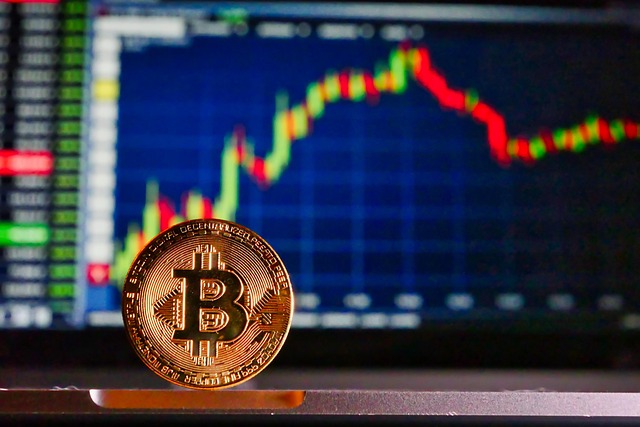Meanwhile raises $40M to bring BTC life insurance to inflation-prone economies
Crypto startup Meanwhile has raised $40 million to scale its Bitcoin-denominated life insurance business, targeting so-called “inflation-prone economies” where policyholders may seek alternatives to traditional fiat-based payouts.The Series A investment round was led by Framework Ventures and Fulgur Ventures, with additional participation from Xapo founder Wences Casares, the company disclosed on April 10. Meanwhile previously secured $20.5 million in seed funding backed by OpenAI CEO Sam Altman and others.Source: MeanwhilelifeRegulated by the Bermuda Monetary Authority, Meanwhile offers a whole life insurance policy denominated in Bitcoin (BTC), giving policyholders the ability to safeguard the value of their life insurance against currency debasement. Policyholders can access the value of their life insurance anytime through loans and tax-free partial withdrawals. Meanwhile co-founder Zac Townsend told Fortune that the company’s life insurance policies operate similarly to typical life insurance policies, but monthly premiums are paid in Bitcoin. When a policyholder passes away, their family receives the value of the claim entirely in BTC. The company’s policies are geared toward clients living in regions with high inflation or currency instability, Townsend said. Given the inflationary tendencies of Western economies and the extreme currency fluctuations in emerging markets, Meanwhile has cast a very wide net on its addressable market. Related: Bitcoin price could rally even as global trade war rages on — Here’s whyBitcoin and the inflation problemBitcoin’s deflationary design has made it a popular store of value for early cryptocurrency adopters, but its role as an inflation hedge in the traditional sense is subject to debate. A 2025 study that appeared in the Journal of Economics and Business determined that Bitcoin’s inflation-hedging abilities have weakened in recent years due to rising institutional adoption. The study referenced Bitcoin’s 60% drop in 2022 when US inflation surged to a 40-year high above 9%.However, some analysts may counter that claim by arguing that investors purchased Bitcoin during the pandemic on expectations that inflation would rise due to massive government stimulus.During this period, “Investors saw that inflation was coming, so they began buying bitcoin hand-over-fist,” said investor and analyst Anthony Pompliano.Regardless of whether Bitcoin meets the technical definition of an inflation hedge, the asset has significantly outperformed inflation, or the debasement of currency, since its inception. The Bitcoin price dipped below $80,000 on April 10 after the latest US inflation data triggered renewed volatility in the market. Nevertheless, the report showed a sharp deceleration in annual inflation in March, with the Consumer Price Index falling to 2.4% from 2.8% in February. The Bitcoin price experienced heavy intraday volatility following the latest US CPI data. Source: CointelegraphRelated: As Trump tanks Bitcoin, PMI offers a roadmap of what comes next
Anti-Elon Musk protests 2025: Everything you need to know
Why are people protesting against Elon Musk? Elon Musk, once celebrated as a tech visionary behind Tesla and SpaceX, has faced growing backlash due to his political ties, controversial corporate decisions and provocative public statements.Born in 1971 in Pretoria, South Africa, Elon Musk co-founded Zip2 in 1995, which was sold to Compaq in 1999. He then launched X.com, which merged with Confinity to form PayPal, acquired by eBay in 2002. His later ventures, SpaceX (2002) and Tesla (2004), solidified his status as a leading innovator in aerospace and electric vehicles. In 2022, Musk acquired Twitter for $44 billion and later rebranded the platform as X, integrating it into his broader vision for an “everything app.”Initially celebrated for his technological contributions, Musk’s public image began to shift in the late 2010s for several reasons:Political involvement: Musk’s association with conservative politics, notably his support for US President Donald Trump and his role as head of the Department of Government Efficiency (DOGE), drew criticism. His advocacy for significant federal spending cuts and program eliminations fueled discontent.Corporate practices: Decisions like relocating Tesla’s headquarters from California to Texas and implementing controversial labor practices contributed to negative perceptions. These actions were seen as prioritizing profit over employee welfare and regulatory compliance.Public statements: Musk’s public communications, especially on social media, often sparked controversy. Critics accused him of spreading misinformation and promoting conspiracy theories, which eroded trust among certain groups.Did you know? Despite popular narratives of Elon Musk as a self-made entrepreneur, he came from a wealthy South African family. His father, Errol Musk, is suspected of owning an emerald mine in Zambia, and Elon has acknowledged receiving financial support from his family during his early ventures. Anti-Elon Musk protests in 2025 By 2025, the aforementioned factors culminated in widespread protests targeting Musk and his business interests. The demonstrations were driven by core grievances:Wealth disparity: Musk’s net worth, which reached $400 billion in December 2024, had declined to $298 billion by April 2025 due to stock market fluctuations and political controversies. His accumulation of wealth highlighted growing economic inequalities, with protesters viewing it as emblematic of systemic issues favoring the ultra-wealthy.Political influence: Musk’s significant political engagement, particularly his advisory role to Trump and influence over DOGE policies, has raised concerns about the concentration of power among wealthy elites. Critics feared this influence undermined democratic processes and prioritized corporate interests over public welfare.Corporate practices: Actions such as aggressive cost-cutting measures, perceived labor exploitation and controversial business decisions led to dissatisfaction among employees and consumers. The “Tesla Takedown” movement, for example, targeted Tesla showrooms, criticizing Musk’s leadership and corporate strategies.Social and environmental concerns: Musk’s business decisions were also scrutinized for their social and environmental impact. Protesters questioned Tesla’s labor practices and the environmental implications of some of his ventures, calling for more ethical and sustainable corporate behaviors.Did you know? A March 2025 Brookings op-ed called DOGE’s naming choice a “branding blunder,” while a CNN/ORC poll found 62% of respondents viewed it as “inappropriate” for a government agency and 44% felt it damaged confidence in the administration’s reform efforts. Tesla protest events in 2025 The “Tesla Takedown” movement, with demonstrations in over 250 cities worldwide, aimed to challenge Musk’s influence. Originating in early 2025, this grassroots initiative organized nonviolent protests at Tesla locations across the US, Canada, Europe and Australia.Protesters called for boycotts and urged the public to divest from Tesla by selling their vehicles and shares, intending to economically impact Musk and question his political influence.Two key factors fueled the protests:Labor practices: Tesla faced allegations of labor rights violations, including reports of employees being fired for expressing dissenting opinions. The National Labor Relations Board had 24 open investigations into Musk’s companies, including allegations of illegal firings at SpaceX.Environmental concerns: Protesters criticized Tesla’s environmental record, highlighting issues such as alleged negligence in the installation and maintenance of solar panels, which led to roof fires at Walmart stores. Walmart filed a multimillion-dollar lawsuit against Tesla, claiming negligent installation and maintenance of solar panels caused roof fires at seven Walmart stores dating back to 2012.Declining sales figures underscored consumer discontent. In the first quarter of 2025, Tesla’s global vehicle deliveries dropped 13% year-over-year to 336,681 units, marking the company’s lowest quarterly performance since mid-2022.Did you know? While intended to be peaceful, some protests escalated into acts of vandalism. For example, on March 24, 2025, incendiary devices were discovered at a Tesla dealership in Austin, Texas. SpaceX controversy 2025 SpaceX’s activities also attracted scrutiny, particularly regarding safety and regulatory compliance. The 2025 Starship explosion served as a stark reminder of the risks associated with private space exploration. The largest and most powerful rocket ever built disintegrated minutes after liftoff, scattering debris across protected areas and reigniting debates about safety, environmental responsibility and regulatory oversight in the private spaceflight industry.Musk’s political involvement further complicated matters. Serving as the head of DOGE, he oversaw significant federal spending cuts and deregulation efforts. This role led to conflicts of interest, especially concerning agencies that regulate his businesses. For example, SpaceX faced fines from the Federal Aviation Administration for safety violations, including operating an unapproved launch control room and using non-approved rocket fuel, totaling $633,009. What does the future hold for Elon Musk amid growing backlash? Musk’s entanglement in political affairs, particularly his advisory role to President Trump and leadership of DOGE, has led to significant public disapproval. A February 2025 poll indicated that 52% of Americans held an unfavorable view of Musk, with only 29% expressing approval.In response to the mounting criticism, reports suggest that Musk is considering stepping back from his governmental advisory role to focus on his business ventures. Such a move could be aimed at mitigating public perception that his political activities are adversely affecting Tesla’s performance.However, given Musk’s history of unconventional decisions and resilience, it’s uncertain whether distancing himself from politics will fully quell public dissent or restore consumer confidence in Tesla.
Bitpanda secures third MiCA license in home jurisdiction of Austria
Austrian fintech unicorn Bitpanda has secured its third license under the European Union’s Markets in Crypto-Assets Regulation (MiCA) framework, further expanding its regulatory footprint across the bloc.Bitpanda announced on April 10 that it would receive a new MiCA license from Austria’s Financial Market Authority (FMA), its third after approvals from regulators in Germany and Malta.Its latest approval marks “another step toward building the most regulated crypto platform in Europe,” the exchange said in an announcement on X.Source: BitpandaMiCA, which took full effect on Dec. 30, 2024, is designed to provide a harmonized legal framework for crypto asset service providers (CASPs) across the EU. Despite this goal, Bitpanda’s pursuit of multiple licenses raises questions about how consistently MiCA is being interpreted and enforced across the bloc.Bitpanda’s MiCA collection storyVienna-headquartered Bitpanda was one of the first crypto asset service providers (CASP) to receive a MiCA license after the framework entered into full force.Germany’s Federal Financial Supervisory Authority (BaFin) was the first regulator to issue a MiCA license for Bitpanda, the firm announced on Jan. 23.According to Bitpanda’s announcement on LinkedIn, it subsequently secured another MiCA license from the Malta Financial Services Authority (MFSA).Related: Malta regulator fines OKX crypto exchange $1.2M for past AML breaches“Following yesterday’s announcement of our first MiCAR license, this second license sends a clear message: Bitpanda is setting the standard as Europe’s most secure and well-regulated crypto platform,” the company wrote.Bitpanda announced receiving a MiCA license from the MFSA in a LinkedIn post. Source: LinkedIn posting date extractorAt the time of publication, none of the relevant regulators — Austria’s FMA, Germany’s BaFin, or Malta’s MFSA — maintain publicly available registries showing which firms have received MiCA licenses.Data from Austria’s Financial Market Authority on Bitpanda’s licensing. Source: FMAAccording to Austria’s FMA records, Bitpanda currently holds four different approvals in Austria and Germany for entities including Bitpanda Asset Management GmbH, Bitpanda Financial Services GmbH, Bitpanda GmbH and Bitpanda Payments GmbH.Does MiCA provide for multiple licenses in EU states?Proposed in 2020, the MiCA framework is designed to set comprehensive regulations for CASPs across the EU, creating “uniform EU market rules for crypto-assets,” according to a key MiCA regulator, the European Securities and Markets Authority.Despite MiCA’s aim to harmonize crypto regulation across the EU, Bitpanda’s pursuit of multiple licenses suggests regulatory inconsistencies may still exist among member states.Cointelegraph approached Bitpanda for comment regarding its approach to securing multiple MiCA licenses but did not receive a response at the time of publication.Magazine: How crypto laws are changing across the world in 2025
How to build a personalized crypto portfolio tracker using ChatGPT
Key takeawaysAI tools like ChatGPT can help both experienced and new crypto investors track portfolios with ease, freeing up time for other investment activities and making the process more accessible.Defining specific requirements, such as which cryptocurrencies to track and the desired data points, is essential for building an effective portfolio tracker tailored to your investment goals.By combining ChatGPT with real-time crypto data from APIs like CoinMarketCap, you can generate valuable market commentary and analysis, providing deeper insights into your portfolio performance.Developing additional features like price alerts, performance analysis and a user-friendly interface can make your tracker more functional, helping you stay ahead of market trends and manage your crypto investments more effectively.If you’re a cryptocurrency investor, you’ve clearly got a strong appetite for risk! Cryptocurrency portfolios involve many immersive stages, from desktop research on the profitability of cryptocurrencies to actively trading crypto to monitoring regulations. Managing a portfolio of cryptocurrencies can be complex and time-consuming, even for savvy investors. Conversely, if you’re a newbie in the world of cryptocurrencies and want to set yourself up for success, you may be put off by the complexity of it all. The good news is that artificial intelligence (AI) offers valuable tools for the crypto industry, helping you simplify portfolio tracking and analysis when applied effectively. As an experienced crypto investor, this can help free up your valuable time to focus on other activities in your investment lifecycle. If you’re a new investor, AI can help you take that all-important first step. Read on to see how AI, and specifically, ChatGPT, can help you build a customized portfolio tracker.To begin with, what is it? Let’s find out.What is ChatGPT?ChatGPT is a conversational AI model that can deliver various tasks using user-defined prompts — including data retrieval, analysis and visualizations. The GPT stands for “Generative Pre-trained Transformer,” which references the fact that it is a large language model extensively trained on copious amounts of text from diverse sources across the internet and designed to understand context and deliver actionable results for end-users. The intelligence of ChatGPT makes it a powerful resource for building a crypto portfolio tracker specifically geared toward your investment profile and objectives.Let’s learn how to build a custom portfolio tracker with ChatGPT.Step 1: Define your requirementsTechnical specifics notwithstanding, it is crucial to first define what you expect from your crypto portfolio tracker. For example, consider the following questions:What cryptocurrencies will you track? What is your investment approach? Are you looking to actively day trade cryptocurrencies or are you looking to “buy and hold” them for the long term?What are the data points you need to compile for the tracker? These may include but are not limited to price, market cap, volume and even news summaries from the web that could materially alter your investment decisions.What exactly do you need the tracker to deliver for you? Real-time updates? Periodic summaries? Perhaps a combination of both?What do you want the output to look like? Alerts, performance analysis, historical data or something else?Once you have a clear understanding of your requirements, you can move on to the next steps. It is best practice to write down your requirements in a consolidated specifications document so you can keep refining them later if required.Step 2: Set up a ChatGPT instanceThis is the fun bit! Well, it is if you enjoy geeking out on code. Remember that ChatGPT is a large language model with a vast amount of intelligence sitting underneath it. Using ChatGPT effectively therefore requires you to be able to access the underlying model, which you can do via an Application Program Interface, or API. The company that owns ChatGPT — OpenAI — provides API access to the tool you can utilize to build your tracker. It’s simpler than you might think. You can use a basic three-step process to set up your own ChatGPT instance:Navigate to OpenAI and sign up for an API key.Set up an environment to make API calls. Python is an ideal choice for this, but there are alternatives, such as Node.js.Write a basic script to communicate with ChatGPT using the API key. Here’s a Pythonic script that you may find useful for incorporating OpenAI capabilities into Python. (Note that this is only intended as a representative example to explain OpenAI integration and not to be viewed as financial advice.)Step 3: Integrate a cryptocurrency data sourceWith your ChatGPT instance set up, it is time to complete the other part of the puzzle, namely, your cryptocurrency data source. There are many places to look, and several APIs can help with the information required for this step. Examples include CoinGecko, CoinMarketCap and CryptoCompare. Do your research on these options and choose one that fits your requirements. Once you’ve made your choice, choose one that fits your requirements and integrate it with the ChatGPT instance you spun up as part of Step 2. For example, if you decide to use the CoinMarketCap API, the following code will get you the latest price of Bitcoin, which you may be trading as part of your crypto portfolio. Step 4: Combine ChatGPT and crypto dataYou’ve done the hard bit, and given that you now have both an AI capability (ChatGPT) and a cryptocurrency data source (CoinMarketCap in this example), you are ready to build a crypto portfolio tracker. To do this, you can leverage prompt engineering to tap into ChatGPT’s intelligence to request data and generate insights.For example, if you want your tracker to return a summary of cryptocurrency prices at a desired time, summarized in a data frame for visualization, consider writing the following code:====================================================================“`python # Set your OpenAI API key client = OpenAI(api_key=openai_api_key) messages = [ {“role”: “system”, “content”: “You are an expert market analyst with expertise in cryptocurrency trends.”}, {“role”: “user”, “content”: f”Given that the current price of {symbol} is ${price:.2f} as of {date}, provide a concise commentary on the market status, including a recommendation.”} ] try: response = client.chat.completions.create( model=”gpt-4o-mini”, messages=messages, max_tokens=100, temperature=0.7 ) commentary = response.choices[0].message.content return commentary except Exception as e: print(f”Error obtaining commentary for {symbol}: {e}”) return “No commentary available.”def build_crypto_dataframe(cmc_api_key: str, openai_api_key: str, symbols: list, convert: str = “USD”) -> pd.DataFrame: records = [] # Capture the current datetime once for consistency across all queries. current_timestamp = datetime.now().strftime(“%Y-%m-%d %H:%M:%S”) for symbol in symbols: price = get_crypto_price(cmc_api_key, symbol, convert) if price is None: commentary = “No commentary available due to error retrieving price.” else: commentary = get_openai_commentary(openai_api_key, symbol, price, current_timestamp) records.append({ “Symbol”: symbol, “Price”: price, “Date”: current_timestamp, “Market Commentary”: commentary }) df = pd.DataFrame(records) return df# Example usage:if __name__ == ‘__main__’: # Replace with your actual API keys. cmc_api_key = ‘YOUR_API_KEY’ openai_api_key = ‘YOUR_API_KEY’ # Specify the cryptocurrencies of interest. crypto_symbols = [“BTC”, “ETH”, “XRP”] # Build the data frame containing price and commentary. crypto_df = build_crypto_dataframe(cmc_api_key, openai_api_key, crypto_symbols) # Print the resulting dataframe. print(crypto_df)“`====================================================================The above piece of code takes three cryptocurrencies in your portfolio — Bitcoin (BTC), Ether (ETH) and XRP (XRP), and uses the ChatGPT API to get the current price in the market as seen in the CoinMarketCap data source. It organizes the results in a table with AI-generated market commentary, providing a straightforward way to monitor your portfolio and assess market conditions.Step 5: Develop additional featuresYou can now enhance your tracker by adding more functionality or including appealing visualizations. For example, consider:Alerts: Set up email or SMS alerts for significant price changes.Performance analysis: Track portfolio performance over time and provide insights. Visualizations: Integrate historical data to visualize trends in prices. For the savvy investor, this can help identify the next major market shift.Step 6: Create a user interfaceTo make your crypto portfolio tracker user-friendly, it’s advisable to develop a web or mobile interface. Again, Python frameworks like Flask, Streamlit or Django can help spin up simple but intuitive web applications, with alternatives such as React Native or Flutter helping with mobile apps. Regardless of choice, simplicity is key.Did you know? Flask offers lightweight flexibility, Streamlit simplifies data visualization and Django provides robust, secure backends. All are handy for building tools to track prices and market trends!Step 7: Test and deployMake sure that you thoroughly test your tracker to ensure accuracy and reliability. Once tested, deploy it to a server or cloud platform like AWS or Heroku. Monitor the usefulness of the tracker over time and tweak the features as desired. The integration of AI with cryptocurrencies can help track your portfolio. It lets you build a customized tracker with market insights to manage your crypto holdings. However, consider risks: AI predictions may be inaccurate, API data can lag and over-reliance might skew decisions. Proceed cautiously.Happy AI-powered trading!
Synthetix USD stablecoin loses dollar peg, drops to 5-year low of $0.83
The Synthetix protocol’s native stablecoin, Synthetix USD (sUSD), fell to its lowest value in five years, extending a months-long struggle to maintain its $1 peg.The asset has faced persistent instability since the start of 2025. On Jan. 1, sUSD dropped to $0.96 and only rebounded to $0.99 in early February. Prices continued to fluctuate through February before stabilizing in March.On April 10, sUSD fell to a five-year low of $0.83, according to data from CoinGecko.SUSD is a crypto-collateralized stablecoin. Users lock up SNX tokens to mint sUSD, making its stability highly dependent on the market value of SNX.1-month price chart of Synthetix USD stablecoin. Source: CoinGeckoSynthetix USD’s “death spiral” risksWhen the sUSD token dropped to $0.91 on April 1, Rob Schmitt, the co-founder of the risk tokenization platform Cork Protocol, explained the potential “death spiral scenario” of the stablecoin. Schmitt said the stablecoin’s design shares similarities with Terra’s TerraUSD (UST) stablecoin, which collapsed in 2022. While he noted key differences in collateralization and debt management, Schmitt said the fundamental risk remains:“The death spiral scenario remains the same though, if the value of SNX drops sufficiently, sUSD is no longer fully backed. If fear of sUSD being unbacked triggers users to redeem sUSD for SNX and sell this, it creates further downwards pressure on SNX, creating a cascading deleveraging event.”Despite the concern, Schmitt emphasized that such a collapse is unlikely due to Synthetix’s $30 million treasury, which holds about half of the outstanding sUSD debt. He said this reserve could be deployed against a spiral scenario.“The biggest factor why sUSD won’t death spiral is because the Synthetix treasury hodls about $30 million of sUSD, which is about half the outstanding debt. To avoid a death spiral, this sUSD can be unwound,” Schmitt wrote. Synthetix founder Kain Warwick previously responded to the dips, saying that while he had feared a death spiral during the last seven years, he sleeps “great” these days. He explained that the dips happened because the primary driver of sUSD buying had been removed. “New mechanisms are being introduced but in this transition there will be some volatility,” Warwick wrote. The Synthetix founder added that since sUSD is a pure crypto collateralized stablecoin, the peg can drift. However, the executive said there are mechanisms to push it back in line if it goes above or below its peg. “These mechanisms are being transitioned right now, hence the drift,” Warwick added. Cointelegraph approached Warwick for further comment but had not heard back by publication. Related: Ukraine floats 23% tax on some crypto income, exemptions for stablecoinsStablecoin loses dollar peg amid market sell-offApart from sUSD, another stablecoin has also recently strayed from its dollar pegs as the crypto market has seen downturns. On April 7, Synnax Stablecoin (syUSD) dropped to $0.94. The project said concentrated sell activities temporarily caused a “slight deviation” from its dollar peg. The project said it was working on implementing a fully open redemption system. Magazine: 3 reasons Ethereum could turn a corner: Kain Warwick, X Hall of Flame
SafeMoon boss cites DOJ’s nixed crypto unit in latest bid to toss suit
Braden John Karony, the CEO of crypto firm SafeMoon, has cited the US Department of Justice’s directive to no longer pursue some crypto charges in an effort to get the case against him and his firm dismissed. In an April 9 letter to New York federal court judge Eric Komitee, Karony’s attorney, Nicholas Smith, said the court should consider an April 7 memo from US Deputy Attorney General Todd Blanche that disbanded the DOJ’s crypto unit.“The Department of Justice is not a digital assets regulator,” Blanche said in the memo, which added the DOJ “will no longer pursue litigation or enforcement actions that have the effect of superimposing regulatory frameworks on digital assets.”Blanche also directed prosecutors not to charge violations of securities and commodities laws when the case would require the DOJ to determine if a digital asset is a security or commodity when charges such as wire fraud are available.An excerpt of the letter Karony sent to Judge Komitee. Source: PACERIn the footnote of the letter, Karony’s counsel wrote an exemption to the DOJ’s new directive would be if the parties have an interest in defending that a crypto asset is a security, but added that “Karony does not have such an interest.”The Justice Department and the Securities and Exchange Commission filed simultaneous charges of securities violations, wire fraud, and money laundering against Karony and other SafeMoon executives in November 2023.The government alleged Karony, SafeMoon creator Kyle Nagy and chief technology officer Thomas Smith withdrew assets worth $200 million from the project and misappropriated investor funds. Another attempt to nix the caseThe letter is Karony’s latest attempt to get the case thrown out. In February, he asked that his trial, scheduled to begin on March 31, be delayed as he argued President Donald Trump’s proposed crypto policies could potentially affect the case.Related: OKX pleads guilty, pays $505M to settle DOJ chargesLater in February, Smith changed his plea to guilty and said he took part in the alleged $200 million crypto fraud scheme. Nagy is at large and is believed to be in Russia.SafeMoon filed for bankruptcy in December 2023, a month after it was hit with twin cases from the SEC and DOJ. It was also hacked in March 2023, with the hacker agreeing to return 80% of the funds.Magazine: 3 reasons Ethereum could turn a corner: Kain Warwick, X Hall of Flame
Trade tensions to speed institutional crypto adoption — Execs
Mounting international trade tensions are rattling cryptocurrency markets — but they could also accelerate institutional crypto adoption, several industry executives told Cointelegraph. Since US President Donald Trump announced sweeping tariffs on US imports on April 2, core cryptocurrencies experienced double-digit price swings, worsening an ongoing market rout starting earlier this year. However, “[t]he silver lining is that economic uncertainty has historically accelerated institutional interest in digital assets as a diversification strategy,” David Siemer, co-founder and CEO of Wave Digital Assets, told Cointelegraph.Bitcoin has already shown “signs of resilience” amid the market turbulence, underscoring the cryptocurrency’s potential as a hedge against geopolitical disruption, according to an April 7 Binance report. Now, “[a]s traditional banking channels become entangled in geopolitical tensions, we’re witnessing increased demand for blockchain-based settlement solutions that operate outside conventional correspondent banking networks,” Siemer said. Bitcoin and the S&P 500’s recent performance. Source: 21SharesRelated: US President Donald Trump issues 90-day pause on reciprocal tariffsTariff turmoilOn April 9, Trump paused implementation of a portion of the sweeping tariffs he announced last week on US imports while simultaneously vowing to hike levies on Chinese goods to 125%. The S&P 500 — an index of the largest US stocks — jumped more than 8% on the news, partially reversing losses tied to Trump’s original tariff announcement, according to Google Finance.Bitcoin’s (BTC) spot price, as well as the total cryptocurrency market capitalization, rose by a similar amount, roughly 8%, as of late-day trading on April 9, CoinMarketCap data shows.Crypto market caps are up on April 9. Source: CoinMarketCapDecentralized finance (DeFi) protocols are particularly well-positioned to benefit from trade turmoil, which highlights the segment’s “strategic value,” according to Nicholas Roberts-Huntley, co-founder and CEO of Concrete & Glow Finance.“DeFi offers a neutral, borderless alternative for accessing credit, earning yield, and moving capital,” Roberts-Huntley said. “For builders, this is an opportunity to double down on interoperability and censorship resistance.”Still, crypto prices will continue to mirror the broader market for the foreseeable future, Aurelie Barthere, a research analyst at Nansen, told Cointelegraph. If the sell-off continues, expect crypto to behave as “just a higher beta risk asset correlated with risk assets at the moment,” Barthere said.Magazine: DeFi will rise again after memecoins die down: Sasha Ivanov, X Hall of Flame
Kraken taps Mastercard to launch crypto debit cards in Europe, UK
Cryptocurrency exchange Kraken has partnered with Mastercard to issue crypto debit cards across the United Kingdom and Europe, the company announced on April 8.The partnership will enable the crypto exchange to expand its payment offerings by launching physical crypto debit cards.The partnership comes as Kraken continues to pursue a license under the European Union’s regulatory framework, the Markets in Crypto-Assets Regulation (MiCA).The debit card will allow users to spend cryptocurrencies and stablecoins directly. Kraken said the rollout will begin in the coming weeks, with a waitlist now open to customers.This partnership builds on Kraken Pay’s growthKraken said its partnership with Mastercard builds on the rapid growth of Kraken Pay, a new tool that enables customers to send money from their Kraken account.Launched in January 2025, Kraken Pay allows users to send more than 300 crypto assets to multiple countries worldwide. It also introduces a paylink feature that enables users to send payments through a simple URL.Since launching the service, Kraken has seen more than 200,000 customers out of its 15 million user base activate Kraktag, a unique user identifier allowing owners to receive money without exposing full bank account details.Crypto payments on the rise“Crypto is evolving the payments industry, and we see a future where global commerce and everyday payments are underpinned by crypto,” Kraken co-CEO David Ripley said in a statement shared with Cointelegraph.“Our clients want to be able to seamlessly pay for real-world goods and services with their crypto or stablecoins,” he said, adding:“Partnering with Mastercard is a major step toward us bringing that vision to life. Together, we will unlock crypto’s true everyday utility, ensuring it remains undeniably relevant and usable long-term.”This is a developing story, and further information will be added as it becomes available.Magazine: 3 reasons Ethereum could turn a corner: Kain Warwick, X Hall of Flame
Crypto fintech Taurus launches interbank network for digital assets
Swiss cryptocurrency fintech Taurus has launched an interbank network that is purpose-built for regulated institutions involved in digital asset operations.On April 9, Taurus announced it launched Taurus-Network (TN), an interbank network designed to simplify and improve digital asset transactions between regulated financial institutions worldwide, the firm said in an announcement shared with Cointelegraph.Taurus’ TN aims to improve collateral mobility, optimize settlement speed and reduce counterparty risk while benefiting capital and liquidity management in digital assets.Among the key benefits of the network is the ability for participants to retain full sovereignty over assets, direct interaction with counterparties and automated compliance without third-party intervention, Taurus SA’s head of product infrastructure, Vassili Lavrov, told Cointelegraph.Multiple banks already involvedThe Taurus-Network launches with participation from several banks worldwide, including Arab Bank Switzerland, Capital Union Bank, Flowdesk, ISP Group, Misyon Bank and Swissquote.According to Lavrov, all of those banks have taken meaningful steps to integrate digital asset capabilities within their operations, with most of them already offering custody of cryptocurrencies to their clients.“By building on Taurus’ relationships with over 35 banking clients across four continents, the network is positioned to become the default infrastructure layer for compliant, high-trust digital asset activity,” the exec noted.A blockchain-agnostic networkAs Taurus expects to tap major global regulated financial institutions for its network, the firm ensures that interoperability is among its core strengths.The Taurus-Network is blockchain-agnostic and supports both public and permissioned distributed ledger technologies, Lavrov said, adding:“It’s engineered to enable seamless interaction across different digital asset types, whether cryptocurrencies, tokenized securities, or digital currencies.”He also added that the network is designed to interoperate across public and permissioned blockchains, so institutions “aren’t locked into one system.”This is a developing story, and further information will be added as it becomes available.Magazine: XRP win leaves Ripple and industry with no crypto legal precedent set
Trump tariffs reignite idea that Bitcoin could outlast US dollar
The lingering fears triggered by US President Donald Trump’s sweeping global tariffs have analysts increasingly convinced that Bitcoin is now more likely than ever to challenge the US dollar in the years ahead.“Higher chance Bitcoin survives over the dollar in our lifetime after today,” Bitwise Invest head of alpha strategies Jeff Parks said in an April 9 X post.Investors will be left with no other option but Bitcoin, says crypto exec“First time the thought hit me and didn’t feel like theory but an actual truth to grapple with,” Parks added. Bitwise CEO Hunter Horsley shared a similar view, noting that with trust in the US dollar waning and other foreign currencies seen as “even weaker,” investors are left with fewer choices. He argued that gold, typically seen as a safe harbor amid uncertainty, also has drawbacks around shipping and storage and implied that Bitcoin may be the only option left. “You wind up buying Bitcoin,” Horsley said.Source: Michael SaylorThe US Dollar Index — which tracks its strength against a basket of major currencies — is trading at 102.193, down 5.84% since Jan. 1, according to TradingView. However, Wall Street analysts were mistaken in thinking that the tariffs would bolster the US dollar, according to a recent Wall Street Journal report.On April 2, Trump signed an executive order establishing a 10% baseline tariff on all imports from all countries, which took effect on April 5. Harsher reciprocal tariffs on trading partners with which the US has the largest trade deficits then kicked in on April 9.Uncertainty around the tariffs and fears of a broader recession have been major catalysts for a wide traditional and crypto market decline.Bitcoin (BTC) is trading at $76,301, down 18.37% since Jan. 1, according to CoinMarketCap data.Bitcoin author Saifedean Ammous said in an April 8 X post that America’s issue isn’t with one specific country’s deficit but with aggregate deficits worldwide due to having a “fiat money printer.”Related: Bitcoin weekly RSI hits bull market low as trader sees $70K BTC price bottom“An ever-increasing number of Americans can live off the money printer as long as the rest of the world is using the dollar,” Ammous said.He argued that the real solution is to stop printing “fake money” and move to a hard store of value, naming Bitcoin or gold as examples.“Another way to solve this problem would be for the world to move to a hard money standard and stop using America’s shitcoin, and give Trump the trade surpluses he thinks he wants.”Magazine: Bitcoin heading to $70K soon? Crypto baller funds SpaceX flight: Hodler’s Digest, March 30 – April 5This article does not contain investment advice or recommendations. Every investment and trading move involves risk, and readers should conduct their own research when making a decision.









